The Relationship Between Matcha Color and Quality: The Secret of Premium Matcha Revealed in Its Vibrant Green Color
The Secret of Matcha Color: Vibrancy Indicates Quality
When choosing matcha, the first thing that catches your eye is its color. Have you ever looked at a vibrant green matcha and thought, “How beautiful”? In fact, this color difference is one of the most important clues for determining the quality of matcha.
High-quality matcha has a vivid jade or bright green color. The highest grade matcha is particularly characterized by a bluish-green vibrant color, described in Japanese as “iro yoshi” (good color). This beautiful color comes from the special cultivation method of the tea leaves.
How Vibrant Green Color is Created
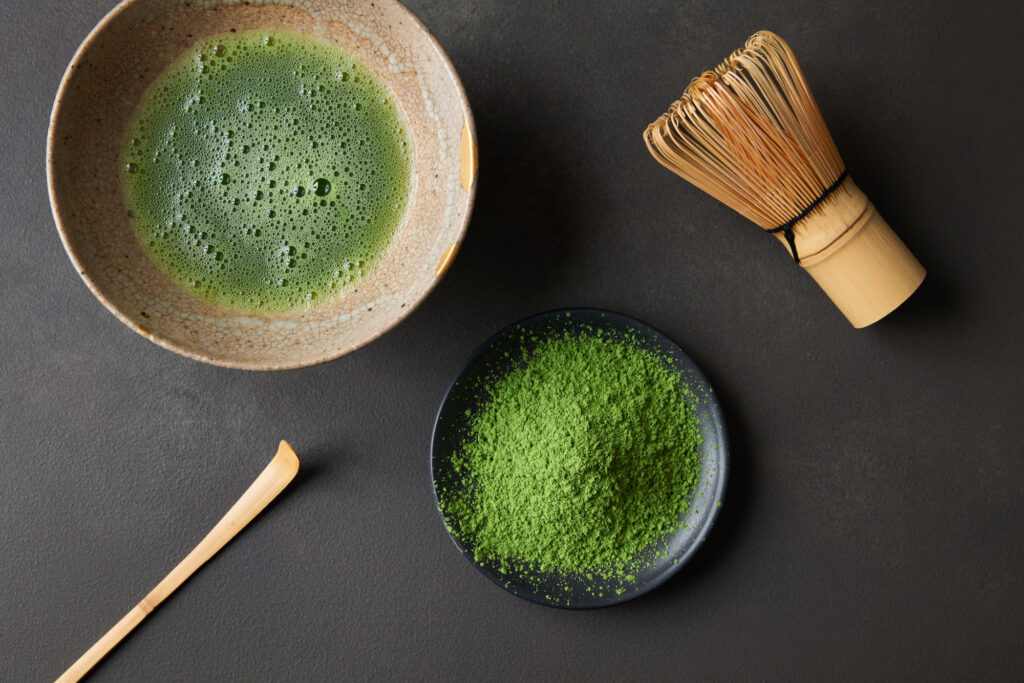
The tea leaves (tencha) used for premium matcha are grown using a special method called “covered cultivation” (oishita saibai), where they are shaded from direct sunlight for about 20-30 days before harvesting. Blocking sunlight prevents the breakdown of chlorophyll in the tea leaves while increasing an amino acid called theanine.
According to a study by the Ministry of Agriculture, Forestry and Fisheries, shade-grown tea leaves contain approximately 1.5 to 2 times more chlorophyll compared to conventionally grown tea leaves. This abundance of chlorophyll is the source of matcha’s vibrant green color.
Quality Ranking Based on Color
The quality classification of matcha based on color can be broadly categorized as follows:
- Deep bluish-green: Highest grade matcha (using only young leaves of tencha)
- Vibrant green: Premium matcha (mainly used for tea ceremony)
- Bright green: Medium to high-grade matcha (high-quality for drinking and confectionery)
- Yellowish-green: Common matcha (for confectionery, etc.)
- Strong yellowish color: Low-quality matcha or matcha powder
According to the Kyoto Prefecture Tea Research Institute, an important criterion for quality assessment of the highest grade matcha is a “bright green” to “bluish-green” color. This color difference is not merely a visual issue but directly relates to flavor and nutritional value.
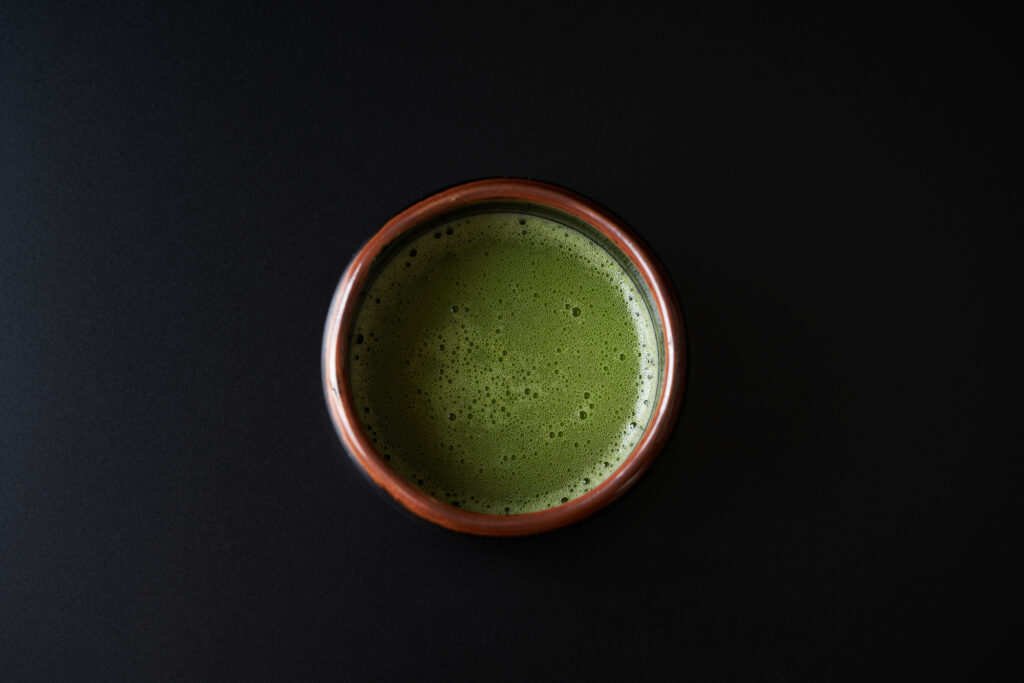
The more vibrant green the matcha is, the less astringent it tends to be, with richer sweetness and umami, and a higher aroma. This indicates an ideal balance of components such as theanine and catechins.
Matcha Grading by Color: Differentiating Quality from Jade Green to Yellow-Green
Matcha color is not just about appearance but is an important indicator of quality. Generally, the more vibrant jade green the matcha is, the higher the quality, with quality tending to decrease as the color becomes more yellowish-green or darker. Here’s a detailed explanation of how to identify matcha grades based on color.
Basic Quality Assessment by Color Tone
Premium matcha displays a vivid jade green color, indicating that only young tea leaf buds are used. According to a survey by the Ministry of Agriculture, Forestry and Fisheries, the Japanese Tea Association standards require high-grade matcha (usucha) to be “vivid green with luster, without yellowish or brownish tints.”
Guidelines for quality classification by color tone:
- Jade green (bright vivid green): Highest grade matcha (ceremonial grade)
- Deep green: High to medium-grade matcha
- Yellowish-green: Medium to low-grade matcha (culinary grade)
- Brownish green: Low-grade or aged matcha
Reasons for Color Differences
The color differences in matcha arise mainly from the following factors:
- Tea leaf cultivation method: Premium matcha uses “covered cultivation,” blocking 70-90% of sunlight for about three weeks before harvesting. This method increases chlorophyll and maintains the vibrant green color. Research by the Kyoto Prefecture Tea Research Institute confirms that longer covering periods result in more vibrant green colors.
- Parts used: The highest grade matcha uses only the tips of young buds (first flush heart buds). The color becomes more yellowish-green as leaf parts and stems are mixed in.
- Processing and storage conditions: As oxidation progresses, the color gradually changes from yellowish-green to brownish. A 2021 survey by the Japan Tea Central Association shows that even properly stored matcha experiences about 30% color deterioration after six months.
When judging matcha color, focus not only on it being “green” but also on its vibrancy, brightness, and presence of yellow tints to determine quality differences. Next time you choose matcha at a tea shop, pay attention to these color differences.
Expert Tips! How to Choose and Store Matcha Based on Vibrancy
Storage Tips to Maintain Matcha’s Vibrancy
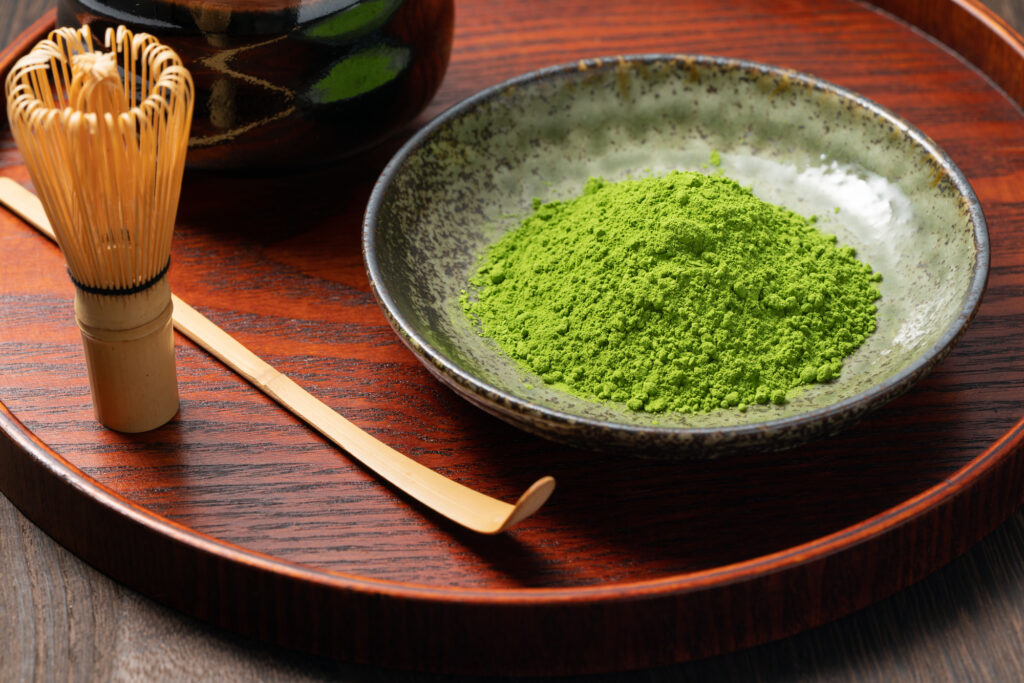
The life of high-quality matcha depends on its vibrant green color. However, even if you purchase good matcha, improper storage can accelerate color degradation. Matcha is very delicate and vulnerable to light, heat, humidity, and oxygen.
According to Mr. Yamamoto, a tea master at the established Kyoto tea shop “Shoeido,” “Because matcha is powdered, it has a large surface area, and the more surface area exposed to air, the faster oxidation progresses.” In fact, data shows that once opened, matcha begins to lose its vibrant color after about two weeks.
Professional Matcha Storage Methods
The optimal storage methods are as follows:
- Refrigerate: Always store in the refrigerator after opening (about 5°C)
- Use sealed containers: Block air with tea canisters or resealable bags
- Light protection: Choose containers with high light-blocking properties as light decomposes pigments
- Use desiccants: Including small desiccants helps prevent moisture issues
Particular attention to condensation is needed in summer when humidity is high. The key is to take out only the amount you need and immediately seal and return the container to the refrigerator.
Judging Matcha Freshness by Color Change
Matcha freshness can be determined by color changes:
- Vibrant jade color: Peak freshness
- Bright green: Good condition
- Dull green: Somewhat deteriorated freshness
- Yellowish-green to yellow: Oxidation has progressed, flavor has also declined
Tea ceremony master Souka Tanaka states, “Matcha is like fresh food. The vibrancy of its color is directly linked to flavor.” Indeed, professional tea practitioners can determine whether tea leaves are premium shade-grown just by looking at the matcha color.
Properly stored matcha allows you to enjoy its vibrant color along with its umami and aroma for longer. Matcha color is not just about appearance but is a mirror reflecting quality and flavor.
Why Matcha Color Changes: The Impact of Manufacturing Process and Storage Conditions on Quality
The Effect of Manufacturing Process on Matcha Color
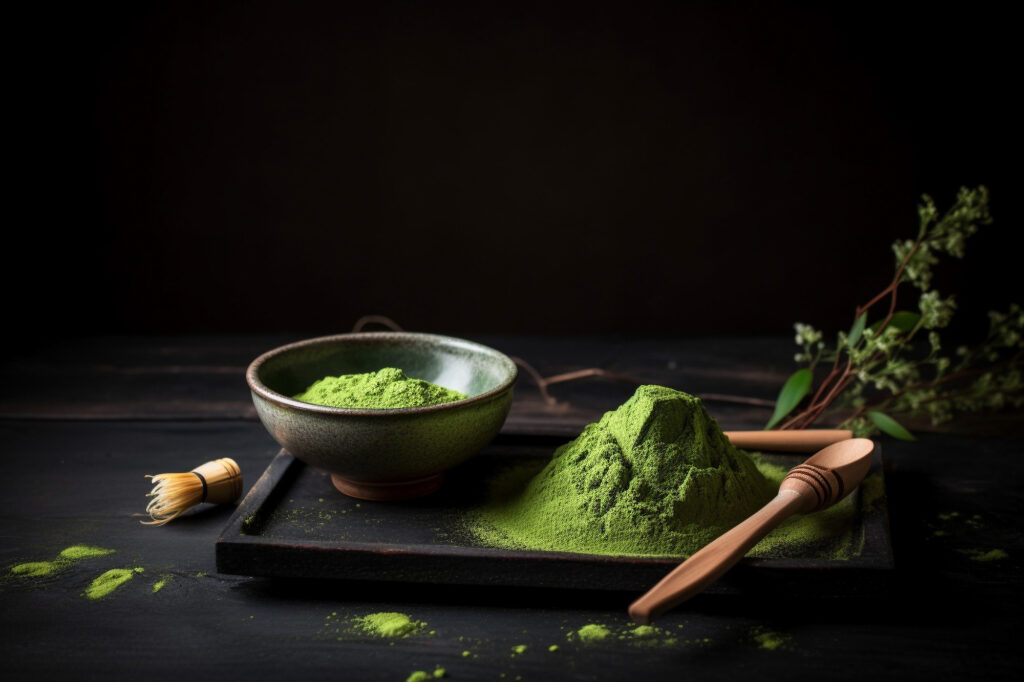
The vibrant green color of matcha is significantly influenced at each stage of the manufacturing process. The period of covered cultivation is particularly decisive for color. High-quality matcha is made by shading tea plants from sunlight for 3-4 weeks before harvesting. This process promotes chlorophyll production while suppressing catechin production, resulting in a vibrant green color and less astringent taste.
According to the Kyoto Prefecture Tea Research Institute, tea leaves covered at a shading rate of over 95% for more than three weeks show about 40% higher chlorophyll content compared to conventionally grown tea leaves. This is the scientific basis for the deep jade color seen in the highest grade matcha.
The Relationship Between Grinding Technology and Color
The grinding method of tea leaves also significantly affects matcha color. Traditional stone mill low-speed grinding minimizes frictional heat, preventing chlorophyll oxidation. In contrast, high-speed grinding machines for mass production tend to generate heat, which can cause color deterioration.
Particle size is also important, with premium matcha having an extremely fine particle size of 5-10 microns. These fine particles reflect light uniformly, creating a vibrant green color.
Color Changes Due to Storage Conditions
Even the highest quality matcha will deteriorate in color within a few weeks under poor storage conditions. Matcha color changes are primarily due to the following factors:
- Contact with oxygen: Oxygen in the air oxidizes chlorophyll, changing the color from green to yellow or brown
- Light degradation: Chlorophyll decomposes even under direct sunlight or fluorescent light
- Temperature effects: Oxidation accelerates in environments over 30°C
- Humidity effects: In high humidity environments, matcha tends to clump, causing uneven coloration
In an experiment by the Japan Tea Central Association, properly stored matcha (light-blocked, low-temperature, sealed) showed less than 10% color change after six months, while matcha stored at room temperature under sunlight showed more than 30% color change after just one month.

After selecting high-quality matcha, refrigeration and sealed containers are essential to maintain its beautiful green color. Minimizing contact with oxygen after opening is key to maintaining matcha quality.
Matcha Utilization Based on Color: How to Choose the Optimal Matcha for Different Uses
Selecting Matcha by Purpose: Optimal Use Based on Color
Understanding the color differences in matcha allows you to choose the optimal matcha for each purpose. Here are utilization methods that leverage the characteristics of matcha from vibrant green premium grades to slightly yellowish varieties.
Selecting Drinking Matcha by Color
For enjoying as tea, a vibrant deep green matcha is ideal. Particularly, vibrant green matcha made from “tencha” features elegant sweetness and umami with less bitterness. High-grade matcha “usucha” used in tea ceremony is perfect for drinking straight due to its vibrant color and high aroma. Research suggests that the more vibrant green the matcha, the higher the L-theanine content, which provides greater relaxation effects.
Matcha Color Suitable for Confectionery
For confectionery purposes, matcha can be selected based on color characteristics:
- Vibrant green matcha: Ideal for Japanese sweets and fresh confections where visual beauty is emphasized
- Medium green matcha: Suitable for baked goods and cakes that undergo heat treatment
- Slightly yellowish matcha: For cost-effective flavoring of cookies and ice cream
According to confectionery manufacturer research, satisfaction with matcha sweets is often determined by the balance between visual vibrancy and flavor, making it important to choose matcha suited to the purpose.
Relationship Between Culinary Use and Color
When incorporating matcha into cooking, considering the characteristics of color can result in a more effective dish.
| Matcha Color | Suitable Dishes | Effect |
|---|---|---|
| Vibrant green | Pasta, sauces, dressings | Accent for color and flavor |
| Medium green | Tempura batter, noodles | Flavoring and coloration |
| Yellowish tint | Curry, soup, stir-fries | Adding aroma and richness |
Matcha color is not merely about appearance but is an important indicator connecting quality and purpose. By discerning color vibrancy and selecting matcha suitable for your purpose, you can enjoy incorporating Japanese traditional culture into modern dietary life. Understanding matcha color is the first step into its profound world.
ピックアップ記事
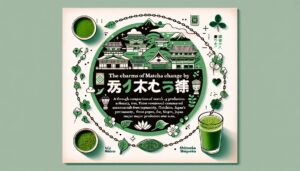


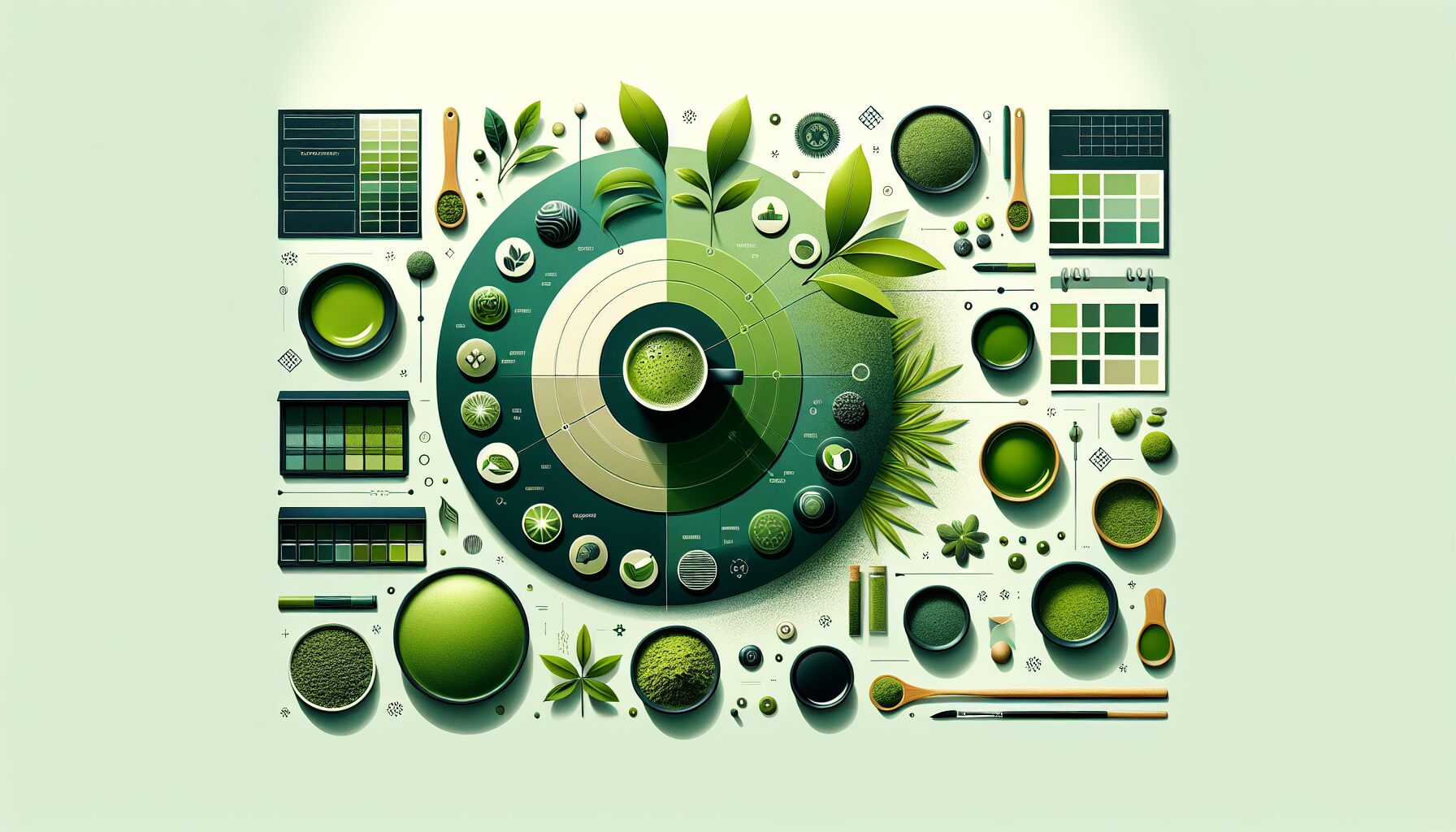

Comments